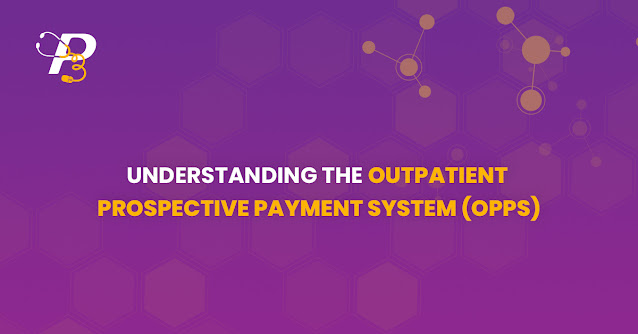Understanding the Outpatient Prospective Payment System (OPPS)
At P3Care, we strive to provide comprehensive information to empower individuals and healthcare professionals alike. In this article, we delve into the intricacies of the Outpatient Prospective Payment System (OPPS). By exploring the key aspects, regulations, and benefits associated with OPPS, we aim to equip our readers with a deeper understanding of this important healthcare framework.
What is the Outpatient Prospective Payment System?
The Outpatient Prospective Payment System (OPPS) is a payment methodology utilized by the Centers for Medicare and Medicaid Services (CMS) to reimburse healthcare providers for outpatient services rendered to Medicare beneficiaries. This system establishes a standardized payment rate for various procedures and services based on Ambulatory Payment Classifications (APCs) and associated Relative Weight Units (RWUs).
How Does the Outpatient Prospective Payment System Work?
The OPPS utilizes a two-tiered payment system consisting of facility payments and non-facility payments. Facility payments are made to hospitals, while non-facility payments are provided to healthcare professionals and facilities that are not part of a hospital setting.
The payment calculation under OPPS involves three key components:
Ambulatory Payment Classifications (APCs): Services and procedures are categorized into APCs, which represent groups of medically similar treatments or interventions. Each APC is associated with a specific payment rate.
Relative Weight Units (RWUs): RWUs are assigned to each APC, indicating the relative resources required to provide the service or procedure. The higher the RWU, the higher the payment rate.
Geographic Adjustments: The OPPS considers geographic variations in costs by applying wage indexes to the payment calculation, ensuring fair and accurate reimbursements across different regions.
By combining these components, the OPPS determines the reimbursement rate for a particular service or procedure.
Key Features of the Outpatient Prospective Payment System
Bundled Payments
OPPS operates on a bundled payment model, which means that multiple services or procedures provided during a single outpatient encounter are grouped together and paid under a single payment rate. This encourages efficiency and coordination of care, as healthcare providers are incentivized to deliver comprehensive and cost-effective services.
Outpatient Code Editor (OCE)
To ensure accuracy and compliance with billing and coding guidelines, the OPPS utilizes the Outpatient Code Editor (OCE). This software applies a series of checks on claims to identify errors or discrepancies and provides edits and warnings to healthcare providers. By utilizing the OCE, providers can minimize coding errors and enhance the integrity of the reimbursement process.
Add-On Payments
Certain high-cost services and procedures that require additional resources may qualify for add-on payments under OPPS. These add-on payments provide supplemental reimbursement to healthcare providers, ensuring that they can adequately cover the costs associated with complex or resource-intensive interventions.
Benefits of the Outpatient Prospective Payment System
The implementation of the OPPS offers several advantages to healthcare providers, Medicare beneficiaries, and the healthcare system as a whole:
Standardized Reimbursements: The OPPS establishes uniform payment rates for services and procedures, promoting consistency and predictability in reimbursement.
Incentives for Efficiency: By utilizing bundled payments, the OPPS encourages healthcare providers to deliver comprehensive care in a cost-effective manner, ultimately leading to improved efficiency and quality of care.
Transparency: The APC-based payment methodology enhances transparency in reimbursement calculations, allowing healthcare providers to understand the payment rates associated with specific services and procedures.
Resource Utilization: The OPPS takes into account the relative resources required for different services and procedures, aligning reimbursement rates with the complexity and intensity of the provided care.
Geographic Fairness: Through geographic adjustments, the OPPS ensures that reimbursements account for regional variations in costs, promoting fairness across different areas.
Conclusion
In conclusion, the Outpatient Prospective Payment System (OPPS) plays a crucial role in the healthcare landscape by providing a standardized reimbursement framework for outpatient services. By understanding the key features, payment calculation process, and benefits of OPPS, healthcare providers can navigate this system more effectively, ensuring fair and accurate reimbursements while delivering high-quality care to Medicare beneficiaries.
Remember, at P3Care, we are committed to keeping
you informed and empowered. For further information on OPPS or any other
healthcare-related topics, feel free to explore our comprehensive resources.
Read more: Unraveling the Distinction: Medical Billing vs. Medical Coding
Visit us:




Comments
Post a Comment